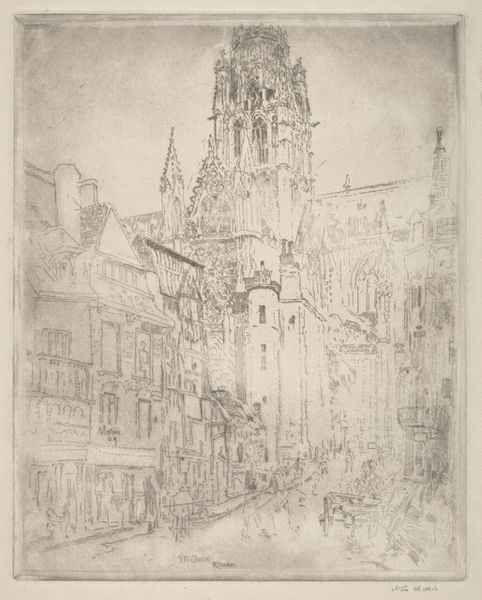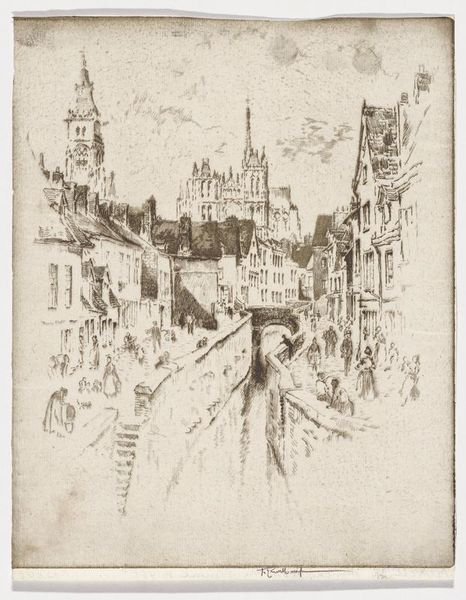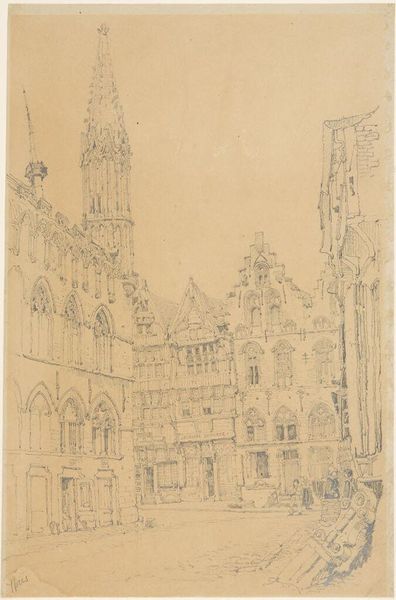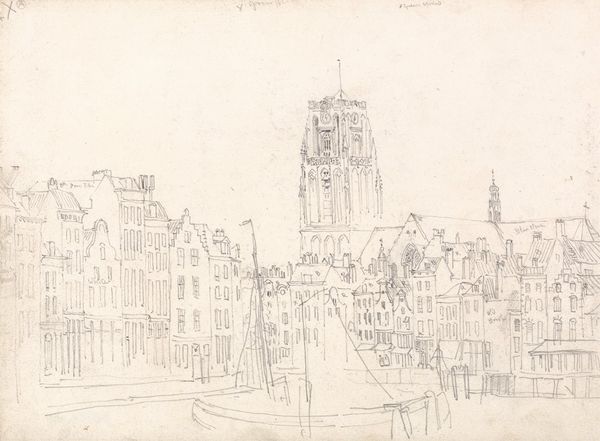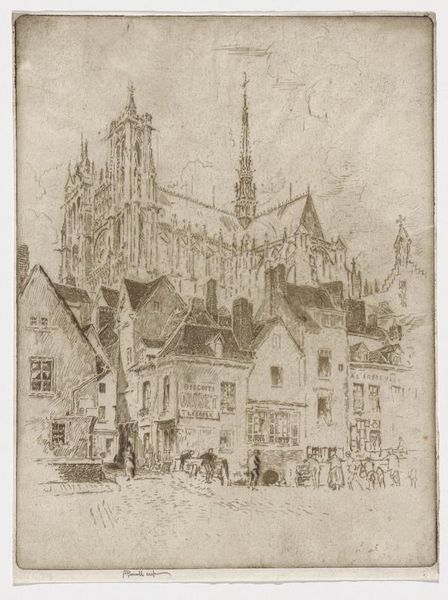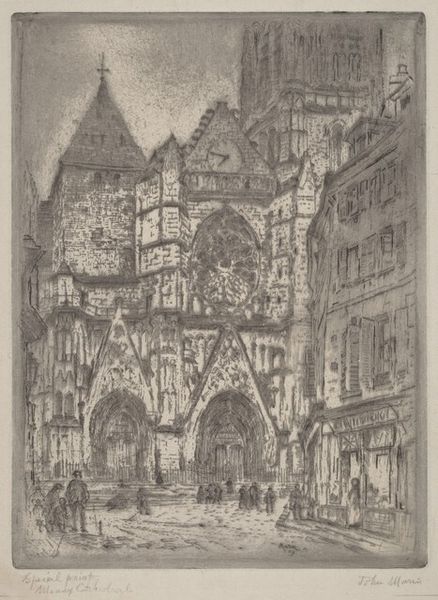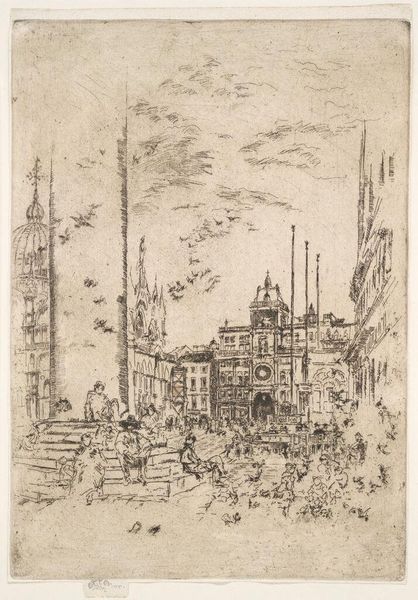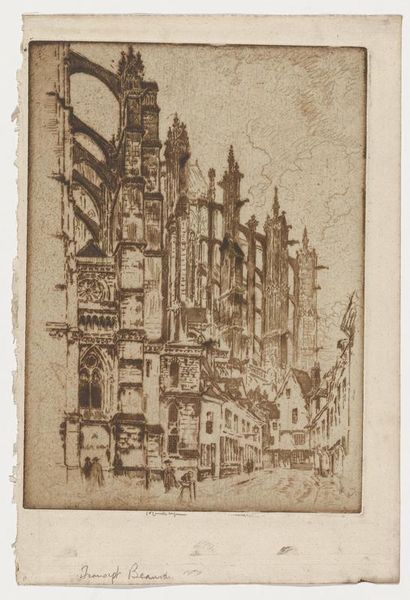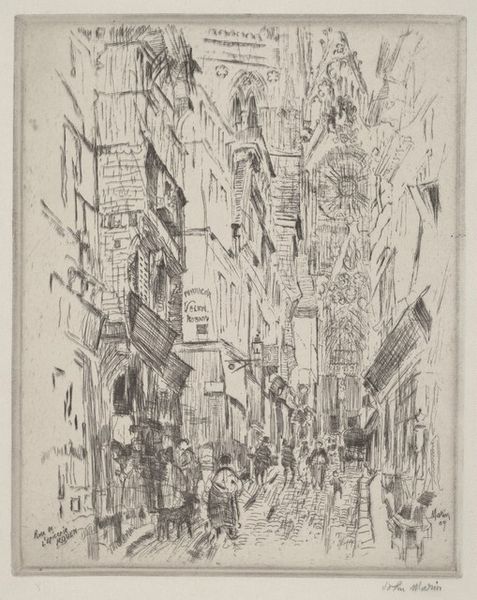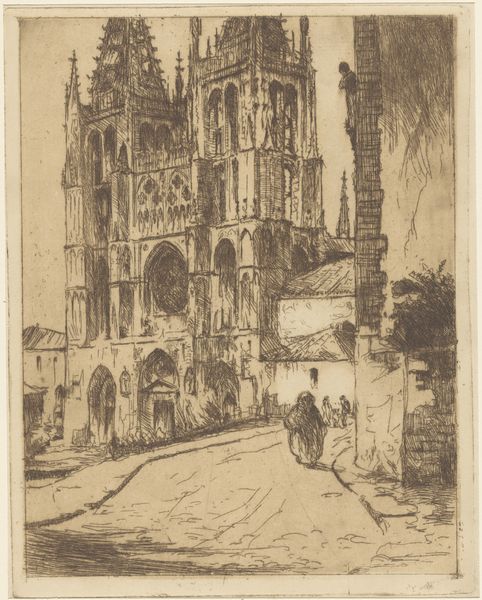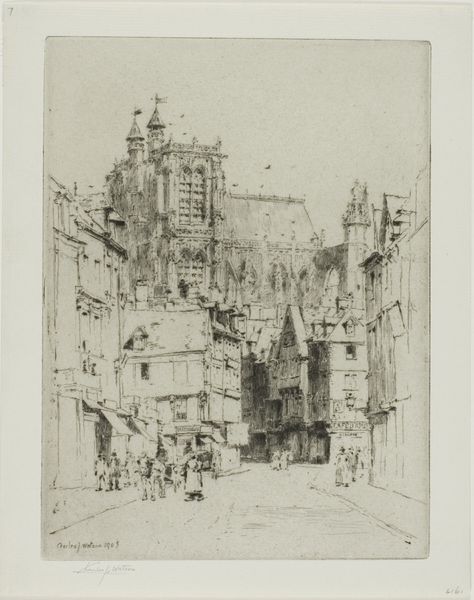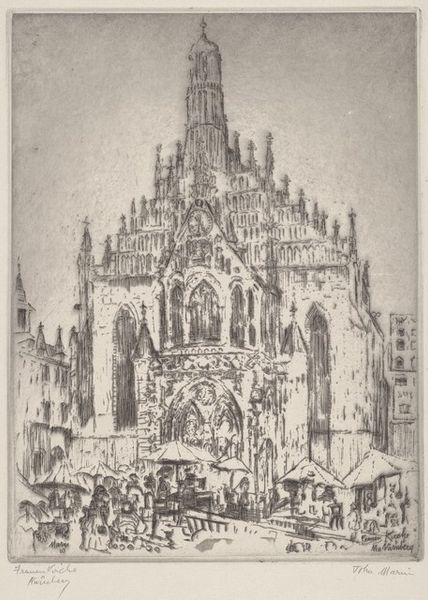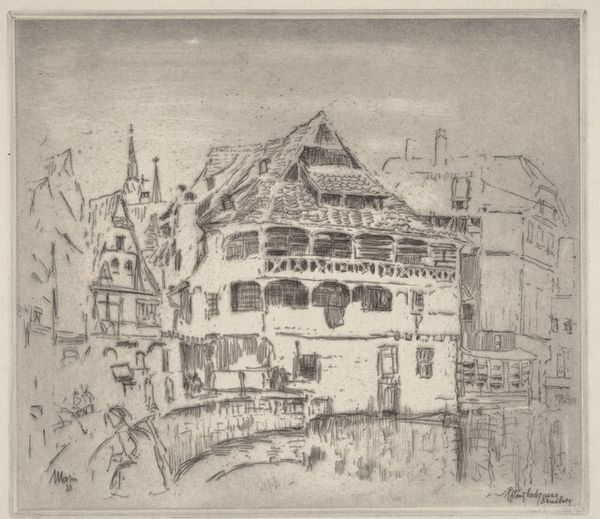
Dimensions: plate: 25 x 20 cm (9 13/16 x 7 7/8 in.) sheet: 35.6 x 25.9 cm (14 x 10 3/16 in.)
Copyright: National Gallery of Art: CC0 1.0
Curator: So, we’re looking at “The Cathedral Near the Old Market, Rouen,” an etching by John Marin, dating to 1909. Etchings like this involve physically and chemically manipulating metal plates, wiping away residue and employing the force of the printing press. I'm immediately thinking about labor... Editor: Wow, it’s a buzzing hive of activity! Look at the energy— the buildings lean in, the market bustles… like a dance. So intricate, too, even frenetic. A little overwhelming but wonderfully evocative. Curator: The crowding is strategic, right? Marin is commenting on urban transformation and consumption here. The Cathedral looms in the background; however, the commerce, and the daily life depicted, consume the focus. Think about the material realities that enabled those printed sheets to be dispersed. Editor: Definitely! The architectural elements—the cathedral itself, those steep roofs—they feel… restless, maybe? They create such jagged, dynamic lines, like a visual echo of the market hubbub below. It’s almost like the city’s soul is vibrating with life. Curator: Interesting that you pick up on that vibrating energy. I see Marin carefully weighing what exactly is afforded primacy: old architectural traditions versus modern capitalist vigor. Even the marks feel restless, a consequence of a chemical process becoming reproducible. Editor: I guess it asks if sacred places remain sanctuaries when markets crop up at their doorsteps. It brings up the thought that the cathedral, with all its permanence, witnesses these waves of change... and how Marin captured that sense of history being layered onto the present! The piece makes me want to wander and see everything that’s happening, all at once. Curator: That idea of witnessing resonates with me too, particularly thinking about the history of printmaking as a social technology and its use of resources and capital to produce something visible. I might have to re-evaluate my understanding through your interpretive lens. Editor: And maybe my understanding is clearer knowing that our viewpoints about how artwork manifests may never fully match. Still, the best conversations begin that way, right?
Comments
No comments
Be the first to comment and join the conversation on the ultimate creative platform.
